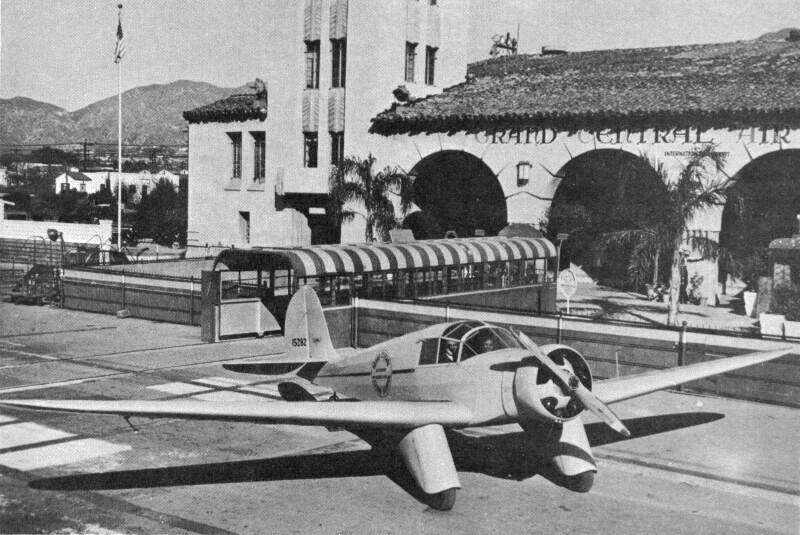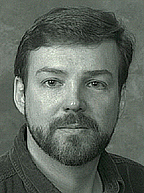|
||||||||||||||||||||||||||||||||||||||||
|
 "An undated photo of the 1st production example of the Aeronca LA (which first flew in 1935) pictured in front of the tower of the Grand Central Air Terminal. Photo courtesy of Kevin Holcomb," photographer, date unknown. Larger. In Count Ten, novelist Hans Otto Storm gives readers the California coast through the eyes of a boy sharing an aerial afternoon with his pilot father. You could look through the prop and see ahead through an artificial haze that changed shade a little at the edges and became the natural haze before the distant California mountains. . . . The dry hills looked like dry hills and that was sensible. Some buzzards where wheeling about over them; they looked like buzzards, small and black and very much set off against the brown hills. The buzzards were high, but he and his father in the plane were higher still. The brown hills broke off in an innocent-appearing line that he knew was a two hundred foot cliff--then black beach, white waves blurred and stationiary, the flat pale-blue sea and again haze, and nothing. And when your eyes got to nothing you suddenly noticed the end of the wing, alone out there and just being there and not doing anything, and you changed the focus of your eyes and looked at it, surprised and shocked and for an instant for some reason a little embarrassed, as if you had unexpectedly seen someone naked.Hans Otto Storm was an electrical engineer as well as a novelist. Count Ten appeared in 1940. |
|||||||||||||||||||||||||||||||||||||||
|
© 2000-2013 California Legacy Project, Santa Clara University English Department, Santa Clara University, 500 El Camino Real, Santa Clara, CA 95053.
For more information: Terry Beers, 408 554 4335, or . 



|
|

|







